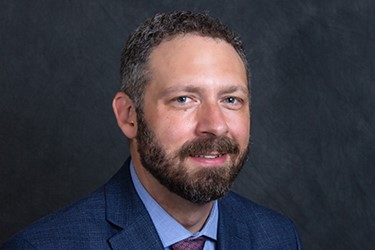Bridging the Gap Between Scientists And Patients In Gene Therapy Development
By David Barrett, Executive Director, American Society of Gene & Cell Therapy

Since research into gene therapy first began more than 40 years ago, the field has expanded dramatically. Within the last few years, scientists and drug developers have successfully brought treatments for certain types of cancer, nerve disorders, and retinal diseases from the lab to the clinic. In addition to the handful of treatments already approved for clinical use in the U.S., hundreds more are in various stages of clinical trials.
For patients suffering from these rare diseases, however, progress is slow. It’s often difficult to get a correct diagnosis, let alone accurate information about potential treatment for a rare disease. These patients must rely collectively on scientists, physicians, pharmaceutical and biotechnology companies, and rare disease advocates to learn about these disorders.
Bridging the gap between professionals and patients remains one of the biggest challenges scientists face, says Phillip Tai, Ph.D., chair of the American Society of Gene and Cell Therapy (ASGCT) Outreach and Communications Committee and an instructor in the Horae Gene Therapy Center at the University of Massachusetts Medical School.
“Patients always ask us, ‘my child has this disease,’ or ‘my loved one has this disease, what is being done to treat it?’” Tai says. Oftentimes, the answers are not as satisfying as patients hope because some diseases have limited patient populations and are still being intensely studied.
“We’re doing our best to address these issues, but the answers aren’t always there. Even though, on paper, therapies are achievable, they might be five to 10 years out because of the lengthy process of preclinical and clinical trials, and the FDA approval process,” Tai says.
In order to not give patients false hope, scientists need to be cautious and honest about the information they do provide, and they need effective ways to broadcast information so it reaches the patients who need it. Advocacy organizations help provide that link.
Tai says scientists in the gene therapy community heavily depend on the advocacy efforts of the rare disease community. Volunteers with rare diseases and their families can help scientists enhance their gene therapy platforms—if they can be identified.
The Case For Additional Outreach
To benefit from gene therapies, patients need to have the resources to know they exist and to connect with the right health care professionals. The internet is helpful for those with access but getting information to patients who lack access or education is a huge challenge, according to Tai. For example, if a patient has a disease that is not life threatening, like an inherited retinal disorder, he or she may simply not seek out these treatment options and accept the consequence of going blind. Additionally, these patients might not have insurance, or they may not know whether they’re eligible for clinical trials. To remedy this, Tai says more outreach can be done in local communities.
Professional organizations are a great resource for patients because they function as a knowledgeable, reliable intermediary. For example, ASGCT offers patients free educational resources covering the science of gene therapy, how clinical trials work, and many developing disease treatments on the patient education section of their website. The Society also hosts a Clinical Trials Finder, a user-friendly interactive database of all active and recruiting clinical trials in the United States. Research that is funded by the National Institutes of Health (NIH) is public information and can also be found online.
“The clinicians, scientists, and researchers that make up our organization are extremely committed to the work they do in the lab to help alleviate these rare diseases,” ASGCT President Guangping Gao, Ph.D. says. “Now that we have reached the point of taking these gene therapies from the lab to the clinic, we need to make sure we provide patient-friendly information to the public so that patients suffering from these diseases can learn about treatment options.
“We need to be a strong voice for patients because these are confusing and very complex diseases,” Gao said.
Educating clinicians is equally as important. Some primary care physicians may not encounter many patients with genetic diseases. As a result, these physicians may need more education regarding how gene therapy could affect a patient’s care. Additionally, the long-term effects of gene therapy remain understudied because the research is still so new. Patients volunteering for gene therapy clinical trials right now may be taking very different versions of the treatments than their contemporaries will who participate in trials for the same diseases five or more years down the road.
Although the field of gene therapy is constantly raising questions that can’t be answered at this point in time, there is a lot to be excited about.
“Technology is always improving, and the future is very, very hopeful,” Tai said.
“As scientists, it’s important for us to convey to patients that we are working on these problems. Even though the process takes a long time, the patients are not being forgotten.”
